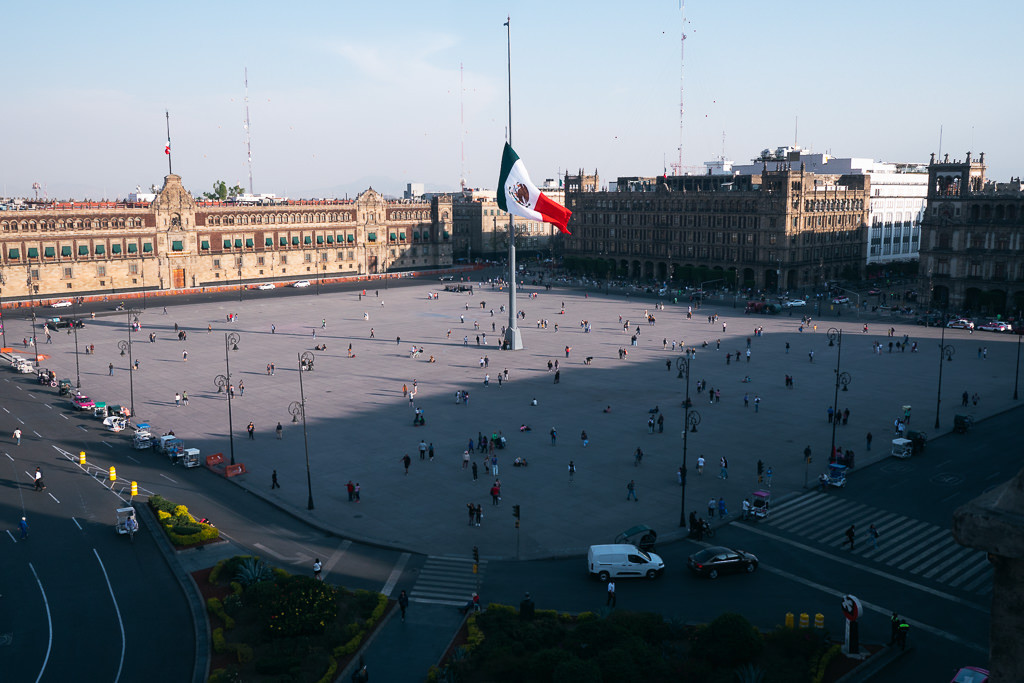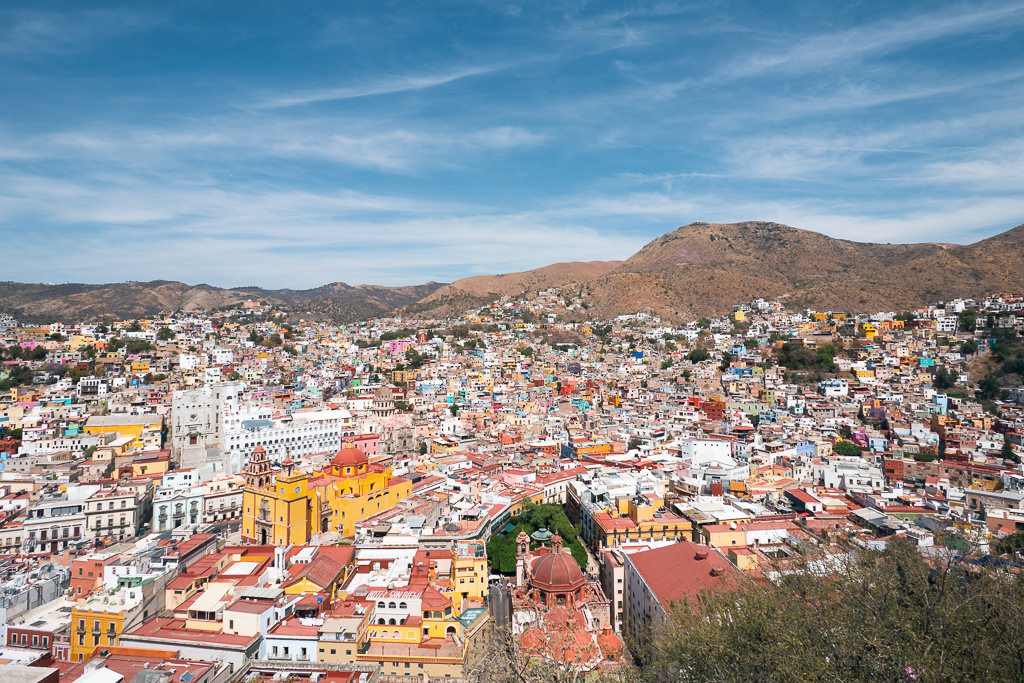Mexico City is absolutely worth it, especially for LGBTQ+ travelers seeking vibrant culture, delicious cuisine, and welcoming communities. Gaymexico.net is your guide to navigating this incredible city, offering insights into the gay scene, LGBTQ+ friendly accommodations, and must-see attractions. Discover why Mexico City should be your next adventure, with travel tips, and essential information.
1. What Makes Mexico City a Compelling Destination?
Mexico City is a compelling destination due to its rich history, diverse culture, world-class museums, and thriving culinary scene. This megacity, home to over 22 million people, might seem overwhelming at first, but it’s surprisingly manageable, especially for tourists. Key areas like El Centro, Roma, and Condesa are highly walkable and safe, offering a taste of the city’s unique charm.
The city’s appeal lies in its ability to blend ancient history with modern life. The historic center, a UNESCO World Heritage site, showcases stunning colonial architecture and significant landmarks like the Metropolitan Cathedral and the National Palace. Meanwhile, neighborhoods like Roma and Condesa boast trendy cafes, upscale restaurants, and beautiful parks, creating a vibrant and cosmopolitan atmosphere.
 Mexico City’s historic centre
Mexico City’s historic centre
The historical center of Mexico City, featuring notable colonial architecture and a bustling atmosphere, offers a glimpse into the city’s rich heritage.
Mexico City also boasts a vibrant LGBTQ+ scene, particularly in Zona Rosa, known for its gay bars, clubs, and LGBTQ+ friendly businesses. The city hosts annual Pride celebrations and various LGBTQ+ events, making it a welcoming and inclusive destination for gay travelers. According to a 2023 report by the UCLA Williams Institute, Mexico City has made significant strides in LGBTQ+ rights and acceptance, making it a safe and enjoyable place for LGBTQ+ individuals to visit.
2. Is Mexico City Safe for LGBTQ+ Tourists?
Mexico City is generally considered safe for LGBTQ+ tourists, especially in popular areas like Roma, Condesa, and Zona Rosa. Like any major city, it’s essential to take precautions, such as avoiding walking alone at night and being aware of your surroundings. However, Mexico City has a relatively progressive attitude towards LGBTQ+ rights, with same-sex marriage legal throughout the country.
While most areas frequented by tourists are safe, it’s advisable to avoid less touristy neighborhoods, particularly at night. Using ride-sharing apps like Uber or authorized taxis is recommended for transportation. The U.S. State Department advises travelers to exercise increased caution in Mexico due to crime and kidnapping risks. However, tourist areas in Mexico City are generally well-policed and secure.
Gaymexico.net offers resources and tips for LGBTQ+ travelers to ensure a safe and enjoyable trip, including recommendations for LGBTQ+ friendly accommodations and venues. Connecting with local LGBTQ+ communities can also provide valuable insights and support.
3. What Are the Must-See Attractions in Mexico City?
Mexico City is brimming with must-see attractions, catering to a wide range of interests. Here are some highlights:
- El Centro Histórico: A UNESCO World Heritage site, featuring the Metropolitan Cathedral, National Palace, and Templo Mayor.
- Teotihuacan: Ancient pyramids located a short day trip from Mexico City.
- Museo Nacional de Antropología: The National Museum of Anthropology showcases Mexico’s pre-Columbian civilizations.
- Frida Kahlo Museum: Explore the life and work of the iconic artist Frida Kahlo.
- Chapultepec Park: One of the largest city parks in the Western Hemisphere, home to museums, gardens, and a zoo.
- Coyoacán: A charming neighborhood with cobblestone streets, art galleries, and historic churches.
For LGBTQ+ travelers, Zona Rosa is a must-visit, offering a variety of gay bars, clubs, and restaurants. The annual Mexico City Pride celebration is one of the largest in Latin America, attracting millions of participants. Gaymexico.net provides detailed guides and recommendations for exploring these and other attractions, ensuring an enriching and memorable experience.
4. How Many Days Are Ideal for Visiting Mexico City?
A minimum of 4 days is recommended to get a good feel for Mexico City and see some of the main highlights. With 7 days, you can explore the city more thoroughly and take day trips to nearby attractions like Teotihuacan. Consider your interests and pace when planning your trip.
- 4 Days: Enough time to see major attractions like El Centro Histórico, Museo Nacional de Antropología, and Teotihuacan.
- 7 Days: Allows for a more relaxed pace, with time to explore neighborhoods like Roma and Condesa, visit multiple museums, and take additional day trips.
If you’re interested in museums and cultural sites, allocate at least 2 to 3 days to explore them at a relaxed pace. For those who prefer smaller cities, spending fewer days in Mexico City might be preferable, with options to visit nearby cities like Puebla or Oaxaca.
5. What Are the Best LGBTQ+ Friendly Neighborhoods in Mexico City?
Mexico City boasts several LGBTQ+ friendly neighborhoods, each with its unique charm and attractions.
- Zona Rosa: Known as the city’s gay village, offering a vibrant nightlife scene, gay bars, clubs, and LGBTQ+ friendly businesses.
- Roma and Condesa: Trendy neighborhoods with upscale restaurants, cafes, parks, and a welcoming atmosphere for LGBTQ+ travelers.
- Coyoacán: A historic neighborhood with a bohemian vibe, offering art galleries, cafes, and a relaxed atmosphere.
Zona Rosa is the epicenter of LGBTQ+ life in Mexico City, offering a safe and inclusive environment. Roma and Condesa are popular among tourists and locals alike, with a cosmopolitan atmosphere and numerous LGBTQ+ friendly establishments. Coyoacán provides a more laid-back experience, with its charming streets and cultural attractions.
 Flower-lined streets in Roma
Flower-lined streets in Roma
The flower-lined streets of Roma in Mexico City contribute to the neighborhood’s inviting atmosphere, making it a popular destination for tourists and locals alike.
Gaymexico.net offers detailed guides to these neighborhoods, highlighting LGBTQ+ friendly venues, accommodations, and events. Connecting with local LGBTQ+ communities can also provide valuable insights and recommendations.
6. What is the Food Scene Like in Mexico City?
The food scene in Mexico City is a major draw for visitors, offering a diverse range of culinary experiences from street tacos to upscale dining. The city is a food lover’s paradise, with options to suit every taste and budget.
- Street Food: Mexico City is famous for its street food, including tacos, tamales, and elotes (grilled corn).
- Traditional Cuisine: Explore traditional Mexican dishes like mole, chiles en nogada, and pozole in local restaurants.
- Upscale Dining: Enjoy world-class dining experiences in upscale restaurants, often blending traditional flavors with modern techniques.
- Markets: Visit local markets like Mercado Roma and Mercado Medellín to sample a variety of foods and local specialties.
Mexico City’s culinary scene reflects its rich cultural heritage, with influences from indigenous traditions, Spanish colonialism, and modern innovations. Food is an integral part of the city’s identity, and exploring its culinary landscape is a must for any visitor.
According to a 2022 report by the World Tourism Organization, food tourism is a growing trend, and Mexico City is a leading destination for culinary enthusiasts. The city’s diverse food scene and vibrant culinary culture make it a top choice for food lovers from around the world.
7. What are Some Tips for Traveling in Mexico City as an LGBTQ+ Individual?
Traveling in Mexico City as an LGBTQ+ individual can be a rewarding experience with some considerations.
- Research LGBTQ+ Friendly Venues: Use resources like Gaymexico.net to find LGBTQ+ friendly accommodations, bars, and clubs.
- Be Aware of Local Customs: While Mexico City is generally progressive, it’s essential to be mindful of local customs and traditions.
- Stay in Safe Neighborhoods: Choose accommodations in LGBTQ+ friendly neighborhoods like Zona Rosa, Roma, or Condesa.
- Use Ride-Sharing Apps: Utilize ride-sharing apps like Uber for safe and reliable transportation.
- Connect with Local LGBTQ+ Communities: Engage with local LGBTQ+ organizations and communities for support and insights.
According to a 2024 report by Human Rights Watch, Mexico has made significant progress in LGBTQ+ rights, but discrimination still exists in some areas. Being informed and prepared can help ensure a safe and enjoyable trip. Gaymexico.net offers valuable resources and tips for LGBTQ+ travelers, promoting safe and inclusive travel experiences.
Address: 3255 Wilshire Blvd, Los Angeles, CA 90010, United States.
Phone: +1 (213) 380-2177.
Website: gaymexico.net.
8. What Day Trips Can You Take from Mexico City?
Mexico City serves as a perfect base for exploring central Mexico, with numerous day trip options.
- Teotihuacan: Explore the ancient pyramids of Teotihuacan, a UNESCO World Heritage site.
- Puebla: Visit the historic city of Puebla, known for its colonial architecture and culinary traditions.
- Tepoztlán: Discover the mystical town of Tepoztlán, famous for its pyramid and spiritual atmosphere.
- Cuernavaca: Explore the “City of Eternal Spring,” known for its pleasant climate and historic landmarks.
These day trips offer a glimpse into Mexico’s rich history and diverse culture. Teotihuacan is a must-see for history buffs, while Puebla offers a taste of colonial charm and culinary delights. Tepoztlán is perfect for those seeking a spiritual experience, and Cuernavaca provides a relaxing escape from the bustling city.
 An aerial view of Guanajuato
An aerial view of Guanajuato
An aerial view of Guanajuato, a colorful and historic city in central Mexico, showcases its stunning architecture and vibrant cultural scene.
Gaymexico.net provides information and recommendations for planning these day trips, including transportation options and LGBTQ+ friendly attractions in each destination.
9. How Does Mexico City Compare to Other Major Cities in Latin America?
Mexico City stands out among major Latin American cities due to its unique blend of history, culture, and modernity. While cities like Buenos Aires and Rio de Janeiro offer their own distinct charms, Mexico City boasts a richer historical heritage and a more diverse cultural scene.
- History: Mexico City’s historical sites, such as El Centro Histórico and Teotihuacan, are unmatched in their historical significance.
- Culture: The city’s museums, art galleries, and cultural events rival those of any Latin American capital.
- Cuisine: Mexico City’s culinary scene is diverse and innovative, offering a wide range of dining experiences.
- LGBTQ+ Scene: Mexico City has a vibrant and well-established LGBTQ+ scene, particularly in Zona Rosa.
While each city has its unique appeal, Mexico City’s combination of historical richness, cultural diversity, and modern amenities make it a standout destination in Latin America. According to a 2023 study by UNESCO, Mexico City is one of the top cultural destinations in the world, attracting visitors from around the globe.
10. What Resources Are Available for LGBTQ+ Travelers Planning a Trip to Mexico City?
Several resources are available for LGBTQ+ travelers planning a trip to Mexico City.
- Gaymexico.net: Provides comprehensive guides, recommendations, and tips for LGBTQ+ travel in Mexico.
- Local LGBTQ+ Organizations: Connect with local organizations for support, information, and community events.
- Online Travel Forums: Participate in online travel forums to ask questions and get advice from other travelers.
- LGBTQ+ Travel Guides: Consult LGBTQ+ travel guides for recommendations on accommodations, venues, and activities.
Gaymexico.net is a valuable resource for LGBTQ+ travelers, offering detailed information on LGBTQ+ friendly venues, accommodations, and events. Local LGBTQ+ organizations can provide valuable insights and support. Online travel forums offer a platform to connect with other travelers and get personalized recommendations. LGBTQ+ travel guides provide curated lists of LGBTQ+ friendly destinations and activities.
11. What Impact Does Tourism Have on LGBTQ+ Communities in Mexico City?
Tourism significantly impacts LGBTQ+ communities in Mexico City, bringing both opportunities and challenges.
- Economic Benefits: Tourism supports LGBTQ+ businesses and creates employment opportunities within the community.
- Visibility and Acceptance: Increased tourism can raise visibility and promote acceptance of LGBTQ+ individuals.
- Cultural Exchange: Tourism facilitates cultural exchange and fosters understanding between different communities.
- Gentrification: Increased tourism can lead to gentrification, potentially displacing local residents and businesses.
While tourism can bring economic benefits and increased visibility, it’s essential to be mindful of its potential impact on local communities. Supporting local LGBTQ+ businesses and engaging with local organizations can help ensure that tourism benefits the community as a whole.
According to a 2022 report by the International Gay & Lesbian Travel Association (IGLTA), LGBTQ+ tourism is a significant contributor to the global economy, and destinations that actively welcome LGBTQ+ travelers often see positive economic impacts. However, it’s crucial to balance economic benefits with the needs and concerns of local communities.
12. Is Mexico City an Affordable Destination for LGBTQ+ Travelers?
Mexico City is considered an affordable destination for LGBTQ+ travelers, offering a range of options to suit different budgets.
- Accommodations: From budget-friendly hostels to upscale hotels, Mexico City offers a variety of accommodations to suit every budget.
- Food: Street food and local restaurants provide affordable dining options, while upscale restaurants offer more luxurious experiences.
- Transportation: Public transportation is affordable and efficient, with options like the metro and buses. Ride-sharing apps like Uber are also relatively inexpensive.
- Activities: Many attractions, such as museums and parks, offer free or low-cost admission.
Compared to other major cities in North America and Europe, Mexico City offers excellent value for money. It’s possible to enjoy a comfortable and enriching trip without breaking the bank. According to a 2023 report by Budget Your Trip, Mexico City is significantly more affordable than cities like New York or London, making it an attractive option for budget-conscious travelers.
13. What Cultural Experiences Should LGBTQ+ Travelers Not Miss in Mexico City?
Mexico City offers a wealth of cultural experiences that LGBTQ+ travelers should not miss.
- Museo Nacional de Antropología: Explore Mexico’s pre-Columbian civilizations.
- Frida Kahlo Museum: Discover the life and work of the iconic artist Frida Kahlo.
- Lucha Libre: Experience the spectacle of Lucha Libre wrestling.
- Traditional Markets: Visit local markets to immerse yourself in Mexican culture and cuisine.
- Day of the Dead Celebrations: Participate in the vibrant Day of the Dead celebrations.
These cultural experiences offer a glimpse into Mexico’s rich history and traditions. The Museo Nacional de Antropología provides a comprehensive overview of Mexico’s ancient civilizations, while the Frida Kahlo Museum offers insights into the life and work of one of Mexico’s most iconic artists. Lucha Libre wrestling is a unique and entertaining cultural phenomenon, and visiting local markets is a great way to experience Mexican culture and cuisine firsthand. The Day of the Dead celebrations are a vibrant and colorful celebration of life and remembrance.
14. What Legal Protections and Rights Do LGBTQ+ Individuals Have in Mexico City?
LGBTQ+ individuals in Mexico City have significant legal protections and rights.
- Same-Sex Marriage: Same-sex marriage is legal throughout Mexico, including Mexico City.
- Adoption Rights: LGBTQ+ couples have the right to adopt children in Mexico City.
- Anti-Discrimination Laws: Mexico City has anti-discrimination laws that protect LGBTQ+ individuals from discrimination in employment, housing, and services.
- Gender Identity Recognition: Mexico City recognizes gender identity and allows transgender individuals to change their legal gender.
Mexico City is one of the most progressive cities in Latin America regarding LGBTQ+ rights. The city has a long history of advocating for LGBTQ+ equality and has implemented numerous legal protections to ensure the rights and well-being of LGBTQ+ individuals. According to a 2024 report by the Human Rights Campaign, Mexico City is a leader in LGBTQ+ rights and protections in Latin America.
15. How Can LGBTQ+ Travelers Contribute Positively to Mexico City’s Community?
LGBTQ+ travelers can contribute positively to Mexico City’s community in several ways.
- Support LGBTQ+ Businesses: Patronize LGBTQ+ owned and operated businesses.
- Engage with Local Organizations: Volunteer or donate to local LGBTQ+ organizations.
- Respect Local Culture: Be mindful of local customs and traditions.
- Promote Responsible Tourism: Practice responsible tourism by minimizing your environmental impact and supporting sustainable practices.
- Share Your Experiences: Share your positive experiences to promote Mexico City as an LGBTQ+ friendly destination.
By supporting LGBTQ+ businesses, engaging with local organizations, and respecting local culture, LGBTQ+ travelers can contribute to the well-being of Mexico City’s community. Promoting responsible tourism and sharing positive experiences can help raise awareness and promote Mexico City as a welcoming and inclusive destination for all.
Are you ready to explore the vibrant and welcoming city? Visit Gaymexico.net for comprehensive travel guides, event listings, and connections to the LGBTQ+ community in Mexico City. Discover why Mexico City is more than worth it – it’s an unforgettable experience.
FAQ: Is Mexico City Worth It?
1. Is Mexico City safe for tourists?
Yes, Mexico City is generally safe for tourists, especially in popular areas like Roma, Condesa, and Centro Histórico. However, it’s important to stay vigilant and take precautions against petty crime.
2. What is the best time to visit Mexico City?
The best time to visit Mexico City is during the shoulder seasons (March-May and September-November) when the weather is mild and there are fewer crowds.
3. How expensive is Mexico City?
Mexico City is relatively affordable compared to other major cities. Accommodation, food, and transportation are generally budget-friendly.
4. What language is spoken in Mexico City?
Spanish is the primary language spoken in Mexico City. While some people in tourist areas may speak English, it’s helpful to learn some basic Spanish phrases.
5. What is the currency in Mexico City?
The currency in Mexico City is the Mexican Peso (MXN).
6. Is Mexico City LGBTQ+ friendly?
Yes, Mexico City is considered LGBTQ+ friendly, with a vibrant gay scene centered in Zona Rosa. Same-sex marriage is legal throughout Mexico.
7. What are some must-try foods in Mexico City?
Some must-try foods in Mexico City include tacos al pastor, mole poblano, chiles en nogada, and elotes.
8. What are some popular attractions in Mexico City?
Popular attractions in Mexico City include the Museo Nacional de Antropología, Teotihuacan, the Frida Kahlo Museum, and the historic center.
9. How can I get around Mexico City?
You can get around Mexico City using the metro, buses, taxis, and ride-sharing apps like Uber.
10. What should I pack for a trip to Mexico City?
Pack comfortable shoes for walking, layers of clothing for varying temperatures, sunscreen, a hat, and any necessary medications.
Address: 3255 Wilshire Blvd, Los Angeles, CA 90010, United States.
Phone: +1 (213) 380-2177.
Website: gaymexico.net.

